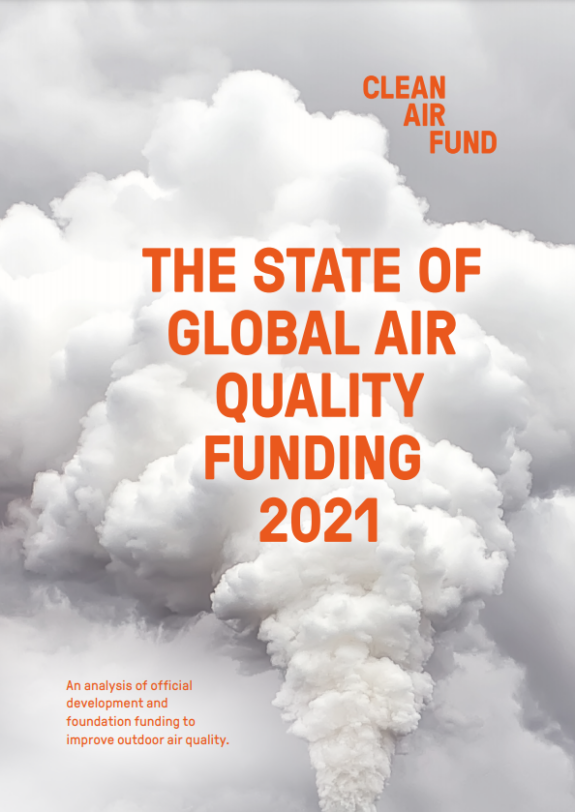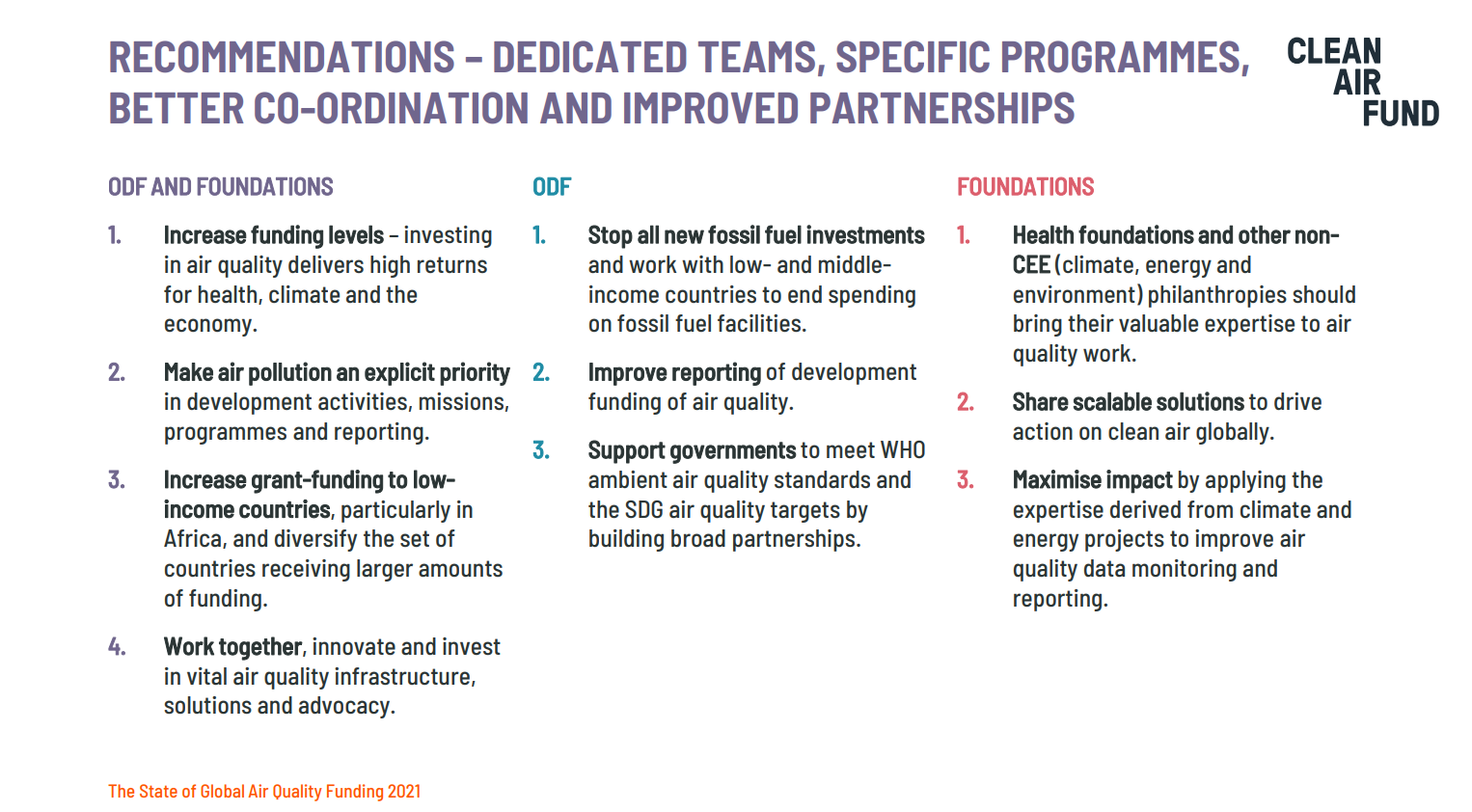
Frequently Asked Questions
Why does funding air quality matter?
Despite the huge public health and environmental crisis we face, clean air remains one of the few blind spots in government policies. Right now, 9 out of 10 people are breathing air which is damaging to their health. For the communities and individuals affected by dirty air across the world – the urgency couldn’t be greater.
This isn’t about prioritising one issue over another, but clean air can be our secret weapon in tackling a multitude of development issues. If we truly want to tackle climate change, save lives and fight inequality at the same time, addressing air pollution is essential.
We need governments and funders to work together to turn the tide on air pollution and deliver the health and climate benefits we need to see.
Fundamentally, action on air pollution can address some of our biggest problems at the same time and will pay for itself many times over. That is why stronger laws on air quality and better enforcement has the backing of the majority of the public around the world.
What are the main messages highlighted in the report?
The State of Global Air Quality Funding 2021 report is the most authoritative global analysis of official development and philanthropic investment into projects tackling air pollution. On the UN’s International Day of Clean Air for blue skies, the Clean Air Fund is calling for better, more coordinated funding on air quality.
Our key messages:
- Despite marginal increases in funding, much more needs to be done to counter the harms caused by air pollution. Between 2015 and 2020, official development funding on air quality projects amounted to less than 1% of all aid funding. Governments that address this blind spot can rapidly deliver huge benefits for people.
- 21% more official development funding was channeled into projects prolonging fossil fuel usage than into projects promoting air quality in 2019 and 2020. Funders must end all new fossil fuel exploration and production, and invest in renewable energies to protect our air.
- Countries in Africa and Latin America are receiving the least financial support to improve air quality, despite pollution claiming over half a million lives annually. We need to ensure that support in tackling air pollution goes to those that need it most.
Official development funders and philanthropic foundation must collaborate to fight air pollution before it’s too late. Tackling air pollution helps us address public health, climate and inequality. It’s a win-win.
What needs to change?
The clean air movement is at a tipping point and, as the findings in our report show, we need action fast. We make a number of recommendations in the report on how funding can address one of our biggest challenges at the same time, delivering concrete, win-win solutions and delivering real impact.

What kinds of funding is covered in the report and what is not?
The State of Global Air Quality Funding 2021 examines flows of funding to air quality projects from official development funders and philanthropic foundations.
- Official development funding includes both grants and soft loans (Official Development Assistance) and loans of a less concessional nature (Other Official Flows) to low- and middle-income countries from ‘Official Donors’ (nation states and multilateral organisations.
- Philanthropic foundation funding is from non-profit or charitable organisations and includes grant making and re-granting.
Official development and philanthropic funding is vital, especially for low- and middle-income countries where governments may not have the means or capacity to fund air quality initiatives without assistance. This funding can also strengthen civil society involvement which can in turn increase the pressure on governments to act on air pollution.
The report does not focus on national (or domestic) funding by governments to tackle their own air pollution problems.
Why should more funding go to countries in Latin America and Africa?
Despite high levels of air pollution in African and Latin America countries, they receive only 5% and 10% of development funding respectively. Philanthropic funding to Africa and Latin America is also low. As countries in these regions develop, rapid urbanisation and industrialisation means that levels of air pollution are increasing. As a result, there is an opportunity for early intervention that not only reduces air pollution but supports a transition to low carbon development.
Does aid to clean air make a difference?
Yes. As the case studies in the report demonstrate, funding air quality projects can makes a huge difference. Improving air quality unlocks rapid and substantial health benefits, helps mitigate against climate change, and addresses inequalities. Without clean air we cannot achieve sustainable development and the 2030 Agenda.
For example, funding to Mongolia’s National Program for Reducing Air and Environmental Program has seen air quality in Ulaanbaatar improve significantly, with concentrations of air pollution reducing by 46% in just one year. In India, funding is helping promote alternatives to crop residue burning, helping reduce emissions of black carbon, an air pollutant that contributes to climate change. The adoption of these alternatives benefits farmers economically, and improves long-term agricultural productivity.
How did you know that more aid goes to fossil fuel prolonging projects?
Why is climate finance not included?
Data for official development funding was obtained from the Creditor Reporting System (CRS) database maintained by the OECD-DAC (for 2015-2019) and from the International Aid Transparency Initiative (for 2020). While this data captures both bilateral and multilateral climate-related development finance flows, it does not capture other ‘climate finance’ – the financial resource provided under the UN Framework Convention on Climate Change (UNFCCC).
Where did you get the data from?
The Clean Air Fund produced this report using data shared with it directly and collected from public sources.
- For the foundation funding figures, the Clean Air Fund relied on data from leading foundations in the air quality field and shared by ClimateWorks Foundation Global Intelligence Department’s in-house tracking.
- For the official development funding figures, the authors have used online and public sources: the Creditor Reporting System (CRS) database maintained by the OECD-DAC and the International Aid Transparency Initiative (IATI).
Every effort has been made to ensure the data is representative of the global air quality funding landscape but the accuracy of our analysis relies on the quality of information provided by funders and the availability of funding information. More information on the methodology, sources and assumptions is available in the report.
Why does so much aid go to ‘implementation’ or ‘multiple/undefined’ projects?
Have a question? Let us know at info@cleanairfund.org.